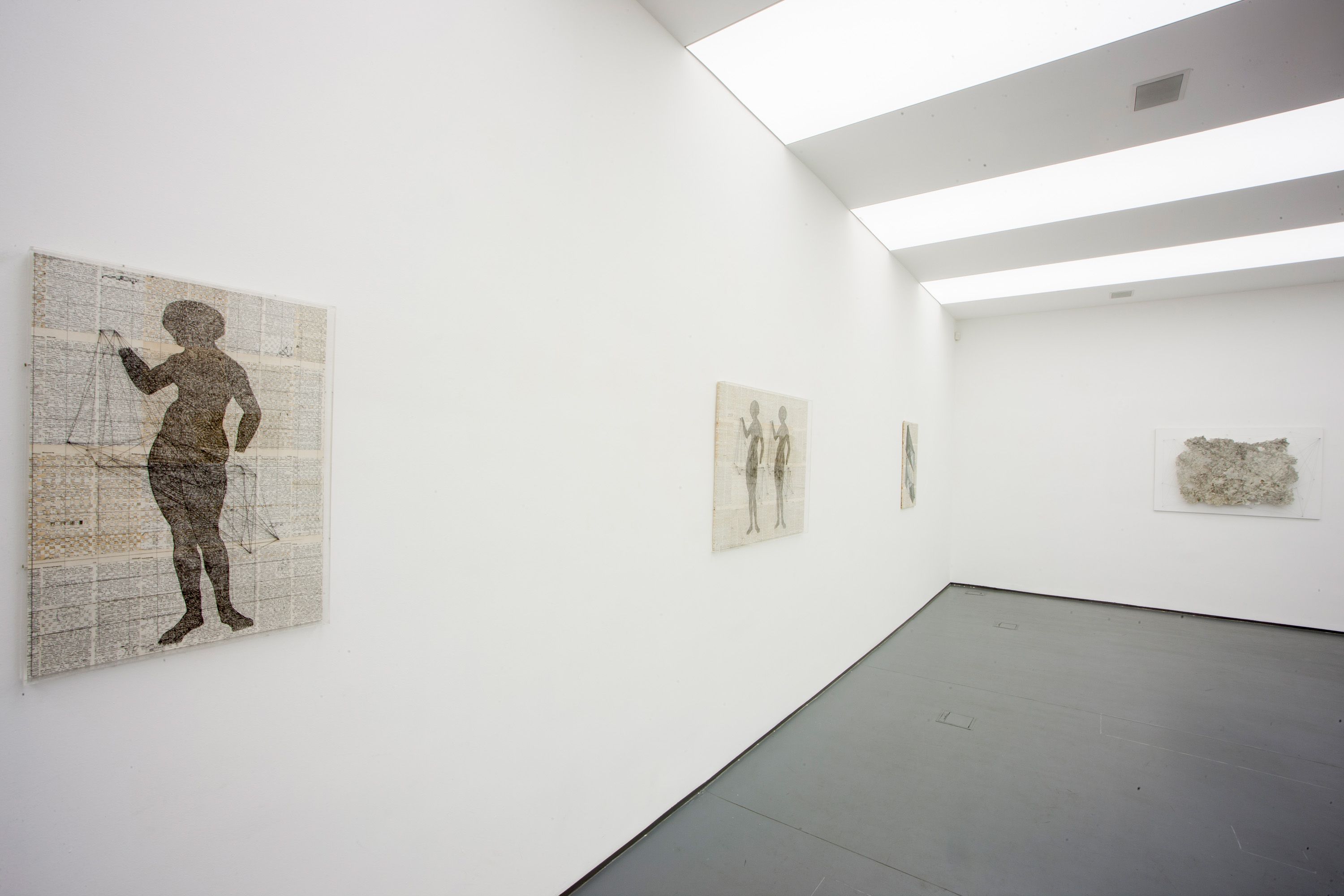Hajnalka Tarr
Transitional Space
| Venue: | acb Gallery |
| Date: | Sep 11 – Oct 16, 2015 |
Description
“From the moment of their birth, human beings have to face the problem of the relation between objective perception and subjective experience. The space of this continuously overwritten relation, the place where continuous movement takes place is the transitory space of approaching experiences, to which the inner reality contributes just as much as the outer reality, between which it constitutes a transition and in which space we spend most of our time. The purpose of this space is twofold: on the one hand, to separate the inner and outer realities, and on the other hand to maintain mutuality between these two domains. The exhibition is an attempt at the visual modeling of this space and movement within it, exploring the geometric spaces of the network of correlations between objective and subjective points while maintaining the question: if we are solely able to articulate every statement and definition we formulate about reality from this space moulded from both subjective and objective elements, is it not a completely presumptuous attempt to make any statement about reality? Or perhaps the simplest solution is to concede that our acceptance of reality is never perfect, and nobody is exempt from the burden of relating inner and outer realities, an endeavor we wilfully or involuntarily undertake all throughout our lives, like fallen heroes, the fact of whose predestined failure we refuse to admit even at the end of the film. At least not out loud.” – Hajnalka Tarr.
The new works of Hajnalka Tarr explore the domain, correlations, overlaps, points of connection, system of relations, and coordinates that exist between inner, emotional, and psychological spaces and outer, real, or supposedly real physical spaces. Formulated as transitory spaces, these works are created through a repetitive, meditative creative process. The exhibited works include picture objects, reliefs, spatial images, and spatial dimensions created using mixed techniques. Their medium is plywood, onto which collages are installed and two- and three-dimensional line structures drawn or applied using wire and fishing line. Several pieces feature a background made by interlacing pages from the Concise Dictionary of the Hungarian Language, evoking Hajnalka Tarr’s recent series addressing the impossibility of conceptually grasping the outside world.
Supported by: NKA

